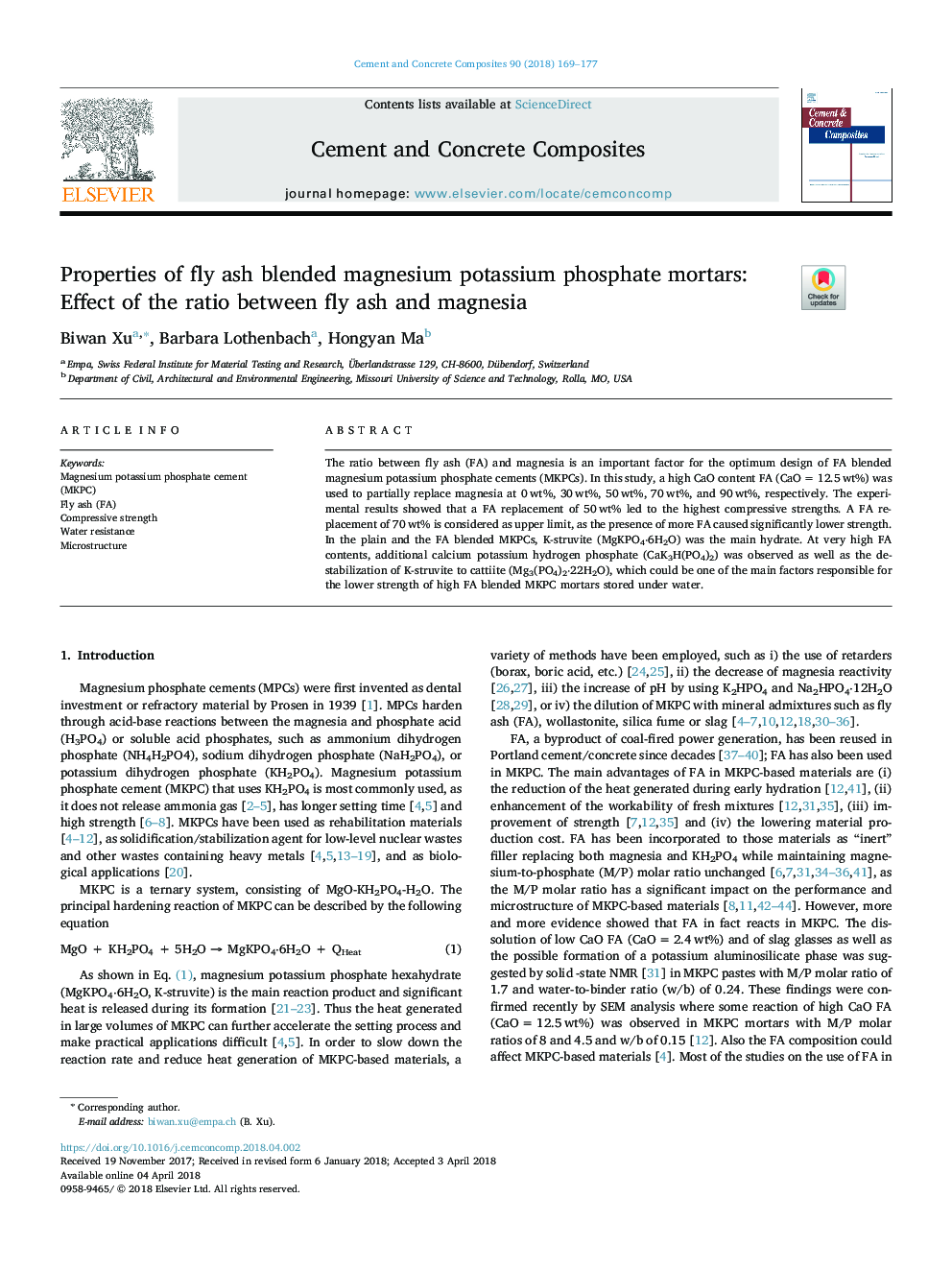| Article ID | Journal | Published Year | Pages | File Type |
|---|---|---|---|---|
| 7883739 | Cement and Concrete Composites | 2018 | 9 Pages |
Abstract
The ratio between fly ash (FA) and magnesia is an important factor for the optimum design of FA blended magnesium potassium phosphate cements (MKPCs). In this study, a high CaO content FA (CaOâ¯=â¯12.5â¯wt%) was used to partially replace magnesia at 0â¯wt%, 30â¯wt%, 50â¯wt%, 70â¯wt%, and 90â¯wt%, respectively. The experimental results showed that a FA replacement of 50â¯wt% led to the highest compressive strengths. A FA replacement of 70â¯wt% is considered as upper limit, as the presence of more FA caused significantly lower strength. In the plain and the FA blended MKPCs, K-struvite (MgKPO4â
6H2O) was the main hydrate. At very high FA contents, additional calcium potassium hydrogen phosphate (CaK3H(PO4)2) was observed as well as the destabilization of K-struvite to cattiite (Mg3(PO4)2â
22H2O), which could be one of the main factors responsible for the lower strength of high FA blended MKPC mortars stored under water.
Keywords
Related Topics
Physical Sciences and Engineering
Engineering
Industrial and Manufacturing Engineering
Authors
Biwan Xu, Barbara Lothenbach, Hongyan Ma,
